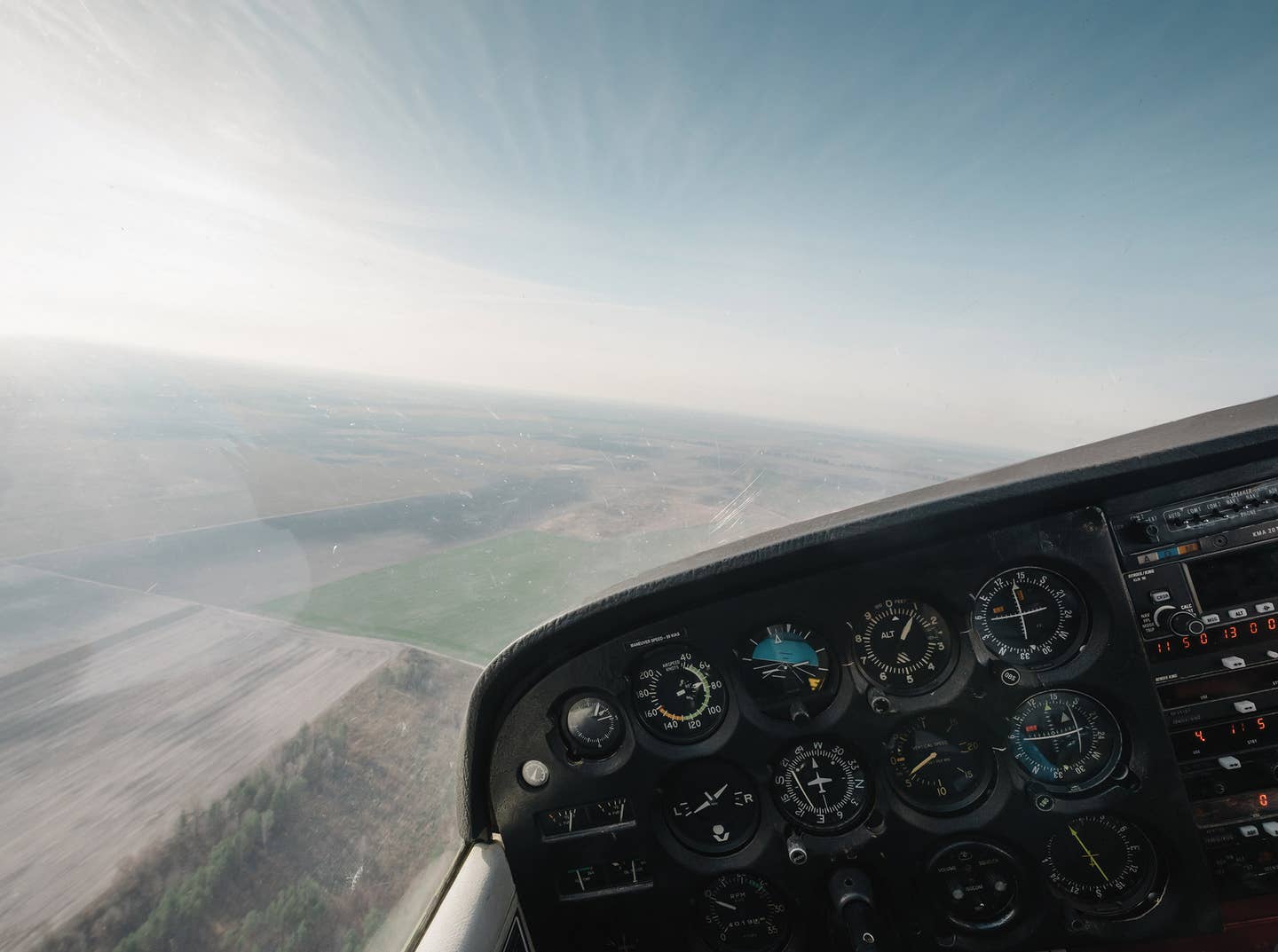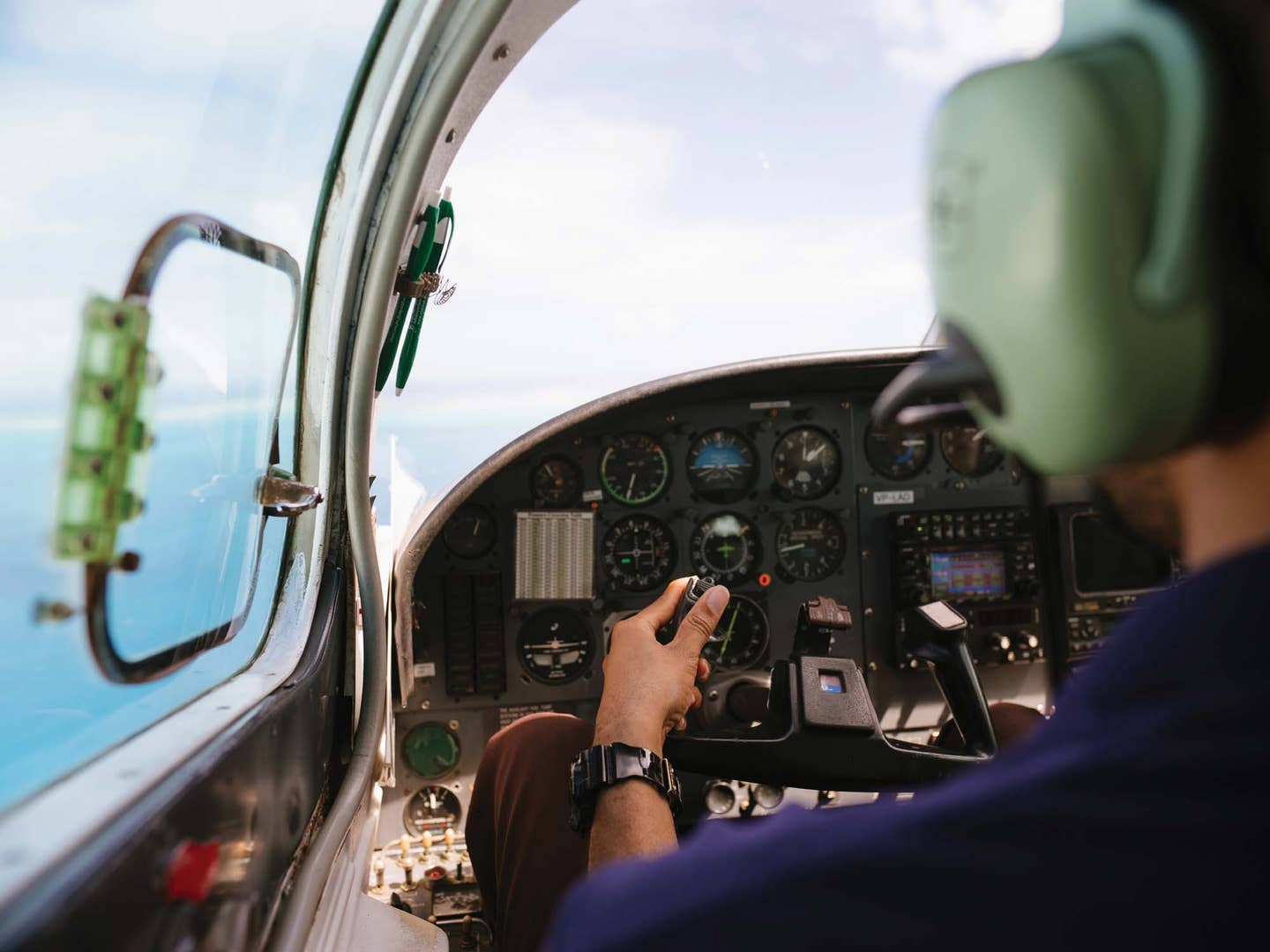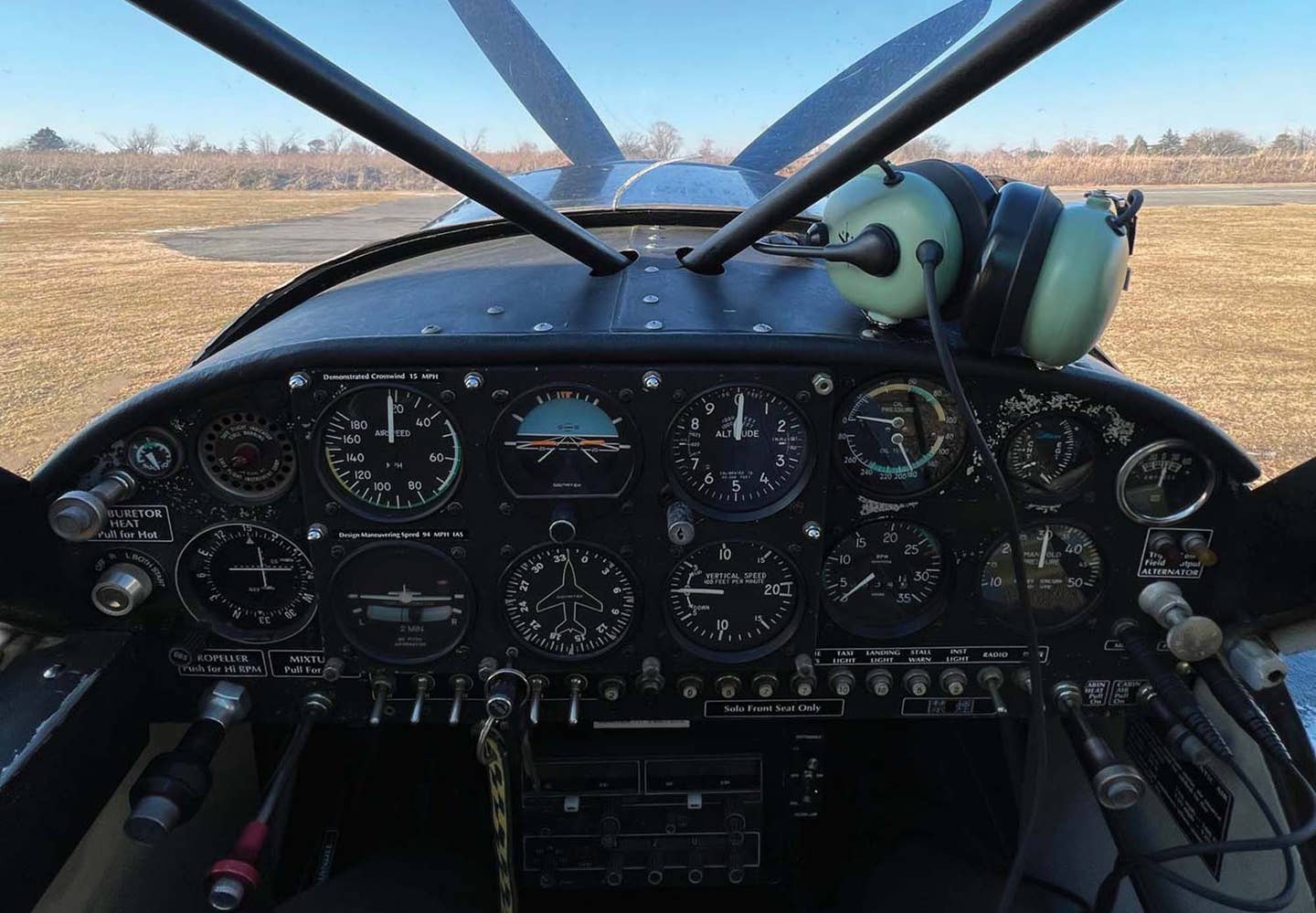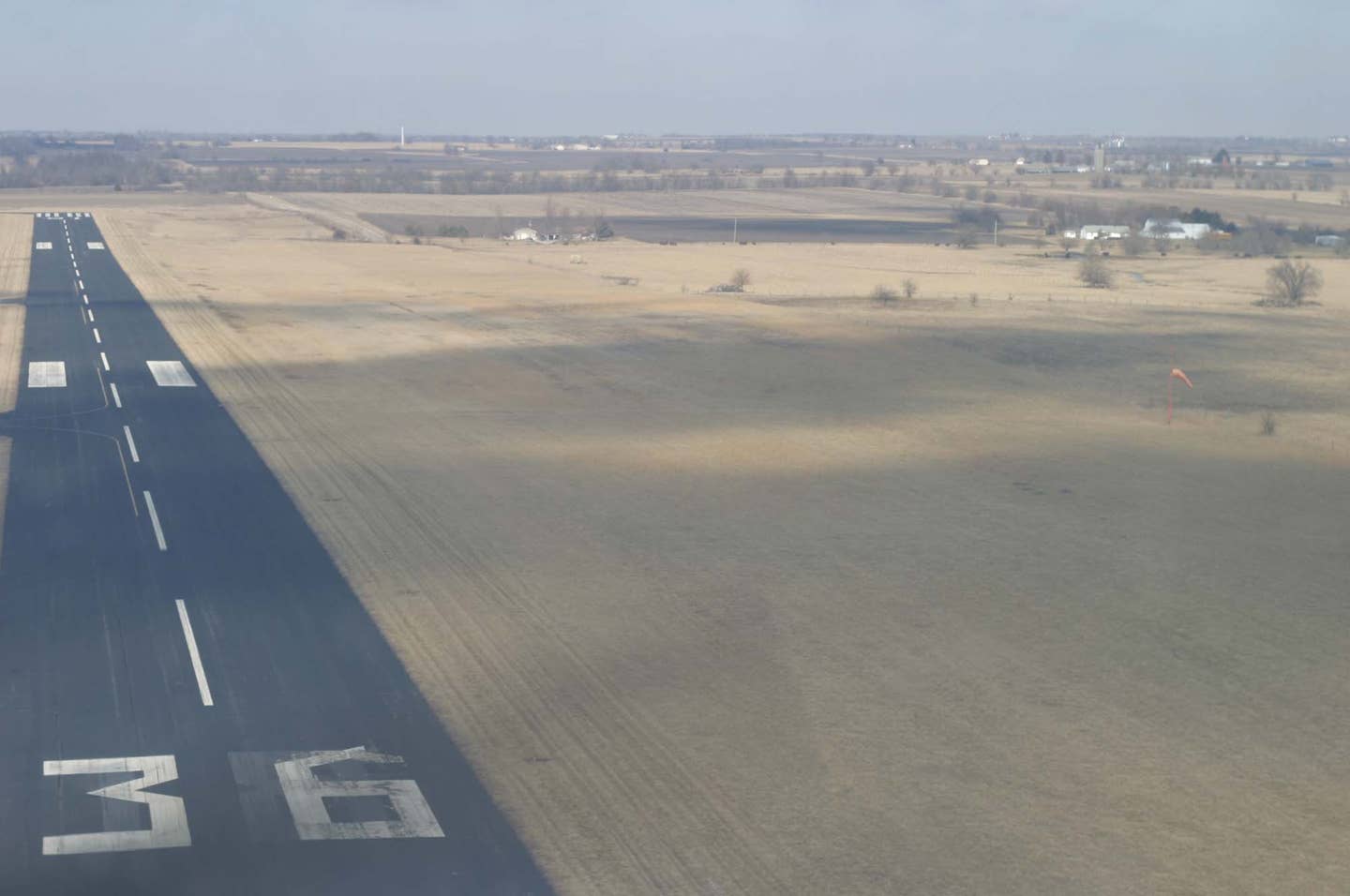What Are the 10 Hardest FAA Private Pilot Written Exam Questions?
Becoming a private pilot is a challenging process and a big accomplishment. Student pilots go through many hours of flight and ground training to become proficient in the required skills…
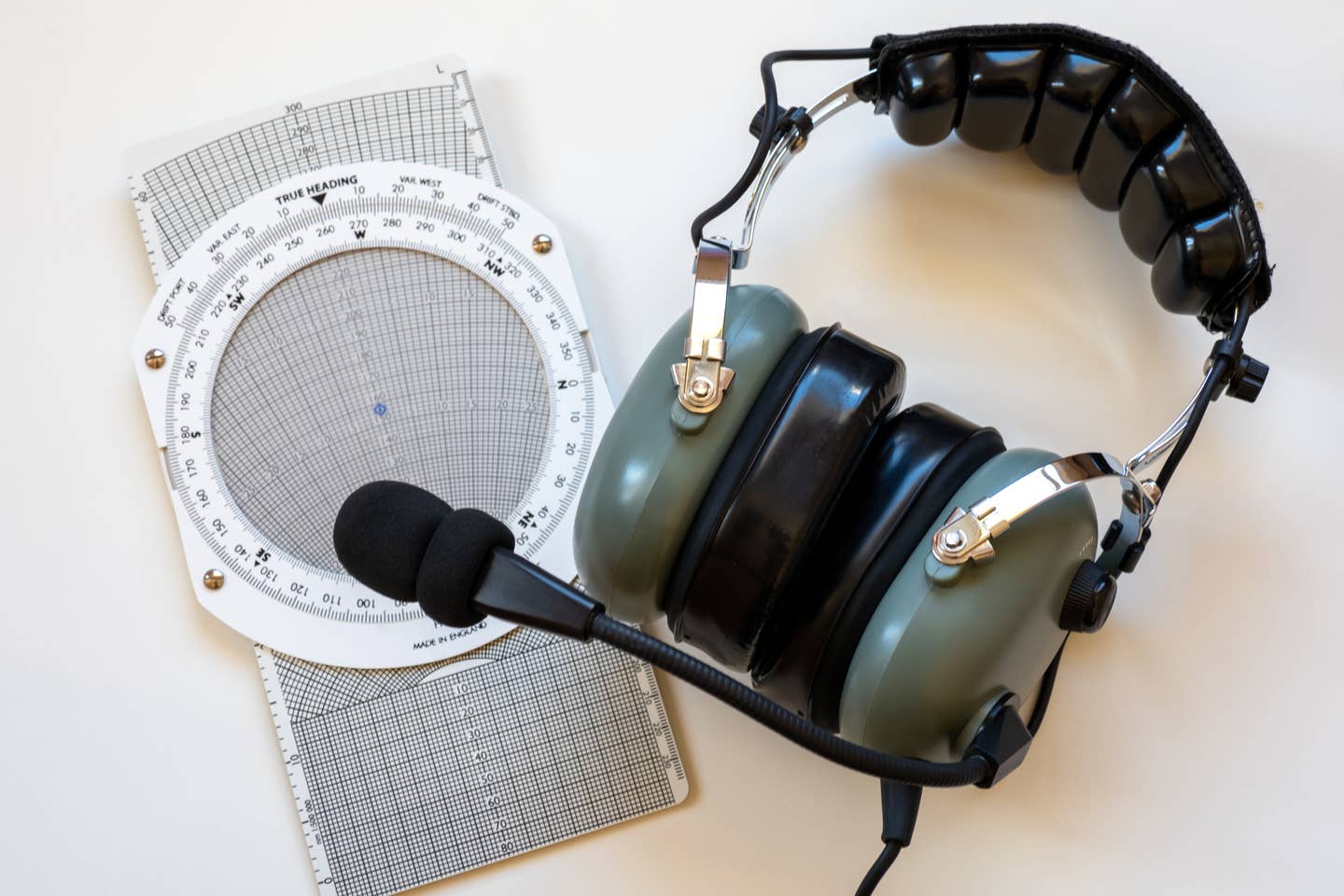
Navigation computer and flight headset [image: Adobe Stock/Art N More]
Becoming a private pilot is a challenging process and a big accomplishment. Student pilots go through many hours of flight and ground training to become proficient in the required skills and knowledge to ultimately earn their private pilot certificate.
One way student pilots demonstrate the subject matter expertise required to hold a private pilot license (PPL) is by taking and passing a written exam. Some of the topics on this exam are particularly challenging, and certain questions tend to be answered incorrectly more than others.
What Is the Private Pilot Knowledge Exam?
The written exam, known as the PAR (private pilot airplane) or PPL written, is a multiple-choice timed knowledge test. Student pilots take this test after completing ground school. The written test is taken at a computer testing center and requires an endorsement from a CFI stating the student is ready to take the test.
How Many Questions Are on the Private Pilot Written Test?
The multiple-choice computer-based test includes 60 questions with three answer choices per question. Test takers are given 120 minutes to complete the exam. Once the exam is complete or the clock runs out, the test is automatically scored and results are printed at the testing center.
How to Pass the Private Pilot Written Test
You must answer at least 70 percent of FAA private pilot written exam questions correctly to pass. Since the PPL test includes 60 questions, at least 42 of your answers need to be right. Although the test is challenging, the PAR (Private Pilot Airplane) written exam has a 90 percent pass rate with an average score of 82 percent, according to the FAA's 2023 statistics report.
How to Prepare for the Private Pilot Written Test
One of the best ways to get ready for the FAA PPL written exam is to complete a ground school course. Depending on where you do your flight training, your flight school or flight instructor may provide ground instruction as part of your training syllabus.
If ground school isn’t included in your training program, it's a great idea to go through a reputable online program on your own. There are many self-paced online courses that teach all the basic concepts needed to pass your written test and be a safe pilot.
10 Hardest Questions on the PPL Written Test
While everyone will have their own unique challenges with ground and flight training, some training topics are more universally misunderstood than others. Also, some test questions are more complicated than others. They may involve charts or data, which can be time-consuming to work through, leaving more room for error.
The actual questions found on the exam and in private pilot written test prep materials are copyrighted. Consequently, while the following example questions are emblematic of those most frequently missed, they are not the exact ones you should expect to find on your PPL written exam. Regardless, if you’re looking for information on how to pass the private pilot written exam, our advice is to pay extra attention to these areas.
1. Weather Report Interpretation
Weather interpretation is an important skill all pilots must develop to make safe and smart decisions. Decoding and interpreting weather reports can be tough in the beginning, but it's best to start getting comfortable with the language now. There will likely be at least one or two coded reports on your written exam.
The best way to learn how to decode a meteorological aerodrome (or meteorological terminal air) report (METAR) is to pull up a decoder tool and work through sample reports section by section. You can also use the Weather Center METAR finder to generate real-time reports.
First, give it your best attempt at decoding unassisted, but if you get really stumped, you can use the decoder for clarity. Obviously, you won't be able to use a decoder in the exam, so it's important not to become overly reliant on this tool.
For extra support with METARs and weather interpretation, King Schools offers an 80-minute training workshop, exclusively on this topic. Check out more King Schools training programs here.
Example question: The remarks section of a METAR report reads RAB28. What does this mean?
2. Airspace Identification and Required Equipment
Written test questions about airspace and sectional charts are designed to test your ability to navigate safely and legally through the skies. Different classes of airspace have different rules, and it's important to be familiar with the requirements for all airspace types.
To practice for these types of questions, pick an airport on a sectional chart and identify all layers of airspace from the surface to the top of the atmosphere. Check your work with a digital sectional like SkyVector or ForeFlight, or ask a CFI if you're not sure.
Example question: Identify the airspace over X airport. (A reference image will be provided during the test.)
3. Center of Gravity Graphs and Tables
Weight and balance questions are a test of a pilot's ability to load their aircraft correctly. Airplanes have a weight limit, and limitations on where weight is placed.
One step that can sometimes get missed on these types of questions is scanning the given chart or graph for all available information. For example, you'll usually need to reference the chart to find the empty weight of the airplane, and add that to the weights provided in the question. If you add only the given weights (usually weights are defined for pilot, passengers, fuel, and cargo), the total will be far too low and your answer won't make sense.
Another mistake that is often made here is forgetting to convert the fuel amount from gallons to pounds. Aviation fuel weighs six pounds per gallon. In the example below, the given fuel amount is 50 gallons, but you'll need to know the weight. The weight (gallons x six pounds. = Weight) is 50 x six, or 350 pounds.
Platforms like Gold Seal and ASA offer some great resources within their ground school program to help students understand and practice weight and balance questions.
Example question: Find the location of the center of gravity on an airplane loaded with the following weights:
Pilot = 200 pounds
Passengers in the aft position = 300 pounds
Baggage = 100 pounds
Fuel = 50 gallons
(A chart or graph will be provided to plot this information.)
4. Density Altitude
Questions about density altitude range from computing the effects of changes in air temperature to evaluating the best response in a given flight scenario. The important thing to remember with these questions is that density altitude changes inversely with altitude. As altitude increases, density altitude decreases.
Make sure to bring an E6B flight computer into your exam in case you need to calculate density altitude or find a temperature conversion. Sporty's electronic E6B is an approved tool you can take into the exam and is faster and easier than the classic sliding E6B.
Example question: How does an increase in temperature from 30 degrees Fahrenheit (F) to 45 F affect the density altitude if the pressure altitude remains at 4,000 feet msl?
5. VFR Weather Minimums
It can be tough to keep all of the different requirements straight when it comes to visual flight rules (VFR) weather minimums. Each class of airspace has its own rules, and sometimes the rules change for night vs. day flying.
A great visual aid to study is Rod Machado's VFR triangle, check out his training programs! It can be particularly helpful if you're a visual learner and would like to see the information rather than just reading it out of a textbook.
Example question: What is the minimum distance from clouds required in VFR flight at night in uncontrolled airspace at 9,500 feet msl?
6. Time En Route Calculations
Similar to density altitude calculations, time en route calculations can be done on an E6B flight computer. These questions are easy to miss if you aren't careful with the many variables and conversions that go into solving the problem.
Some questions will also intentionally include additional information that isn't necessary to solve the problem. Don't let this confuse you. If information doesn't seem relevant to a question, it may have been added as a distraction.
Example question: How long will it take to travel 35 nautical miles at a ground speed of 105 knots?
7. Landing and Takeoff Distance Calculations
Questions about takeoff and landing distance will almost always be paired with a relevant performance graph. These graphs will look very similar to graphs found in your aircraft's pilot operating handbook that are used for flight planning. You'll need to know how to calculate and plot information on these charts accurately to understand how much space you actually need to land and takeoff.
As with other chart- and graph-based questions, overlooking information is a common mistake. There are usually prescribed conditions that are important for an accurate result.
Example question: What is the total distance required for takeoff? (A graph will be provided, and the question will offer details about weather and the aircraft.)
8. VOR Indications
Some VHF omnidirectional range (VOR)-related questions ask you to identify your position on a map based on the indication on the instrument. A great way to better understand these types of questions is to see the VOR in action, either in the airplane, or via simulation.
You don't need a full sim to practice using VORs, though. Download a desktop or mobile app, and change up the variables in a controlled environment.
Example question: When using a VOR test signal, if the course deviation indicator is centered, what should the to/from indicator display?
9. Stall Speed
If aerodynamics have your head spinning, you're not alone. Questions about load factor, stall speed, and center of gravity can appear in the form of charts, graphs, and scenarios.
Visualizing how aerodynamic forces are working on an aircraft can be a powerful way to wrap your head around these types of problems. Courses like those offered by Angle of Attack provide visual examples and explanations of basic aerodynamic principles and more advanced concepts.
It's helpful to get the same information in multiple ways to create a more well-rounded picture. If staring at the load factor chart just isn't making it all come together, try watching some videos about wind tunnels, Bernoulli's principle, and the critical angle of attack.
Example question: What happens to the stall speed of an aircraft when its weight increases?
10. Aircraft Systems and Flight Instruments
If you are taking the written exam before starting any kind of flight training, you might find instrument and system questions particularly challenging. They do become easier with time and experience, but when you're brand new to flying, the information can be hard to grasp.
Fly 8MA has a free introductory ground school course full of informative videos, some of which explain and show actual flight instruments and systems. Watching instruments and systems in action will help you understand how they function.
Example question: Which instruments would be affected if the static port became blocked?
Plan to Pass the Private Pilot Written Exam
The best way to prepare for this test is to set a date, ideally no more than two to four weeks after finishing ground school while the material is fresh in your mind. Once you've set that date, devote regular time to study and run through practice questions to make the certification process that much smoother, and your flying that much safer.
And keep in mind that regardless of whether you've already started flight training, going through an approved ground school will set you up for success— both in the airplane and on your PPL exams.
FAQ
How much is a PPL written test?
The PPL written exam costs $175 for both first-time tests and retakes. If a passing score of at least 70 percent isn't reached on the first try, it will cost $175 to retake it.
Is the PPL exam hard?
The written exam is challenging and requires a lot of study and preparation ahead of time. Still, if you take your studies seriously, you have a good chance of passing on the first try. The FAA reports a 90 percent pass rate on the PPL written exam.
Where can I take the FAA written exam?
To sign up to take the written exam, first create an account with FAA PSI Exams. Once your account is set up, you can select the exam type (the three-letter code for private pilot certification is PAR) and choose a testing location near you. Exam slots only open up to two weeks in advance, so it's best to wait until you're ready to take the exam before scheduling a time.

Subscribe to Our Newsletter
Get the latest Plane & Pilot Magazine stories delivered directly to your inbox

